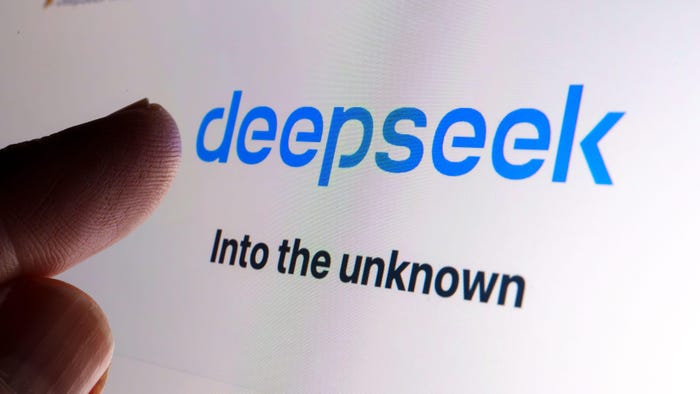3 Quick Wins for Cybersecurity Validation in 20253 Quick Wins for Cybersecurity Validation in 2025
Rethink resilience with these game-changing ways to validate your security.
February 10, 2025

Security validation is becoming mainstream. It has turned a corner and is now a top priority for security leaders, especially after the introduction of the Continuous Threat Exposure Management (CTEM) framework by Gartner in 2022.
A Brief History of Security Validation
As attack surfaces and complexities grew, vulnerability management alone was no longer enough for posture management. Since 2015, technologies like breach and attack simulation (BAS), risk-based vulnerability management (RBVM), external attack surface management (EASM), and penetration test (PT) automation have emerged to fill the gap.
These technologies aim to verify the true security status of an environment by scanning the attack surface or emulating actual attacks and using threat intelligence insights. Their output? A prioritized list of remediation and mitigation steps based on real exploitability risk and system impact.
In plain English, security validation (SecVal) is like "battle testing" for your security.
Fast forward to today, the solution space has matured with agentless, "easy-button" adversarial security validation tools. Here are three high-impact use cases for applying security validation effectively.
1. Validate Against Ransomware Strains
With ransomware damages on the rise, executives demand clear metrics on their organization's readiness against these attacks.
Previously, elements of the ransomware kill chain were tested separately — email filtering, phishing detection, data loss prevention (DLP), and endpoint security. Now, security validation enables testing across all stages of ransomware attacks from groups like LockBit, REvil, Maze, and Conti. This helps assess how effectively defenses detect, contain, and neutralize threats.
It's critical to remember that breaches often happen due to anomalies — one user, one endpoint, or one misconfigured firewall. Automating security validation helps ensure full coverage, enabling tests on every endpoint to identify vulnerabilities or exceptions that could let ransomware in and spread.
2. Validate User Credential Threats
Stolen credentials account for 31% of breaches over the past decade and 77% of web application attacks (per Verizon's "2024 Data Breach Investigations Report"). One infamous example is the Colonial Pipeline attack in 2021, where an exposed VPN password for an account thought to be defunct gave attackers access.
Security validation makes it simple to test for cyber-identity risks tied to stolen or leaked credentials. This includes scanning for exposed credentials, emulating credential-stuffing attacks, and checking for weak or reused passwords. It also flags gaps in password policies and ensures credential-based defenses like multifactor authentication (MFA) and single sign-on (SSO) are functioning correctly.
By safely replicating the use of compromised credentials, organizations can close critical gaps in their identity-threat posture.
3. Validate Patched Vulnerabilities
When a critical CVE is announced, teams rush to deploy patches. But how can you be sure the patches worked across 100% of your infrastructure and didn't create new issues?
Security validation ensures patches are not just deployed but effective. Take the Equifax breach, for example: A failure to patch a known vulnerability in Apache Struts led to the exposure of sensitive data for 147 million people. Validation after patching could have prevented this by confirming the patch's effectiveness and identifying residual gaps.
The Path to Surgical Remediation
Security validation doesn't just uncover gaps; it provides evidence-based guidance for fixing them. By understanding the full kill chain, teams can focus on the most critical fixes, avoiding the "patch everything" approach. This precision reduces remediation bottlenecks and enables timely, targeted action, making security teams more effective.
While security validation highlights what needs fixing, it also proves what's working. Knowing your defenses can handle real-world threats is far better than assuming they will.
Unlike traditional metrics, security validation measures your posture based on emulated attacks. It offers a fresh perspective on progress and performance — one that arguably should have been the standard from the start.
Switch From Reactive to Proactive
Cyber resilience isn't just about installing defenses — it's about challenging them. Security validation helps organizations shift from reactive to proactive security management. By safely emulating real-world attacks in live environments, it ensures controls can detect, block, and respond to threats before damage occurs.
Security leaders who embrace validation are setting themselves up for long-term success in an ever-changing threat landscape.
Don't wait for the next breach. Get the GOAT Guide to start validating, start defending, and start winning.
By Aviv Cohen, Chief Marketing Officer, Pentera
About the Author

Aviv Cohen is a speaker, cartoonist, and author with over 20 years of experience in product and marketing management. He joined Pentera in its early days, shepherding its growth into a global brand and market leader. Before Pentera, Aviv developed Earnix's brand and founded its Excelerate Insurance Summit and CEO Forum and held significant product and marketing roles at Nvidia (NASDAQ: NVDA),and Amdocs (NASDAQ: DOX). Aviv holds a B.Sc. in electronics and computer science and an MBA.
Read more about:
Sponsor Resource CenterYou May Also Like
Uncovering Threats to Your Mainframe & How to Keep Host Access Secure
Feb 13, 2025Securing the Remote Workforce
Feb 20, 2025Emerging Technologies and Their Impact on CISO Strategies
Feb 25, 2025How CISOs Navigate the Regulatory and Compliance Maze
Feb 26, 2025Where Does Outsourcing Make Sense for Your Organization?
Feb 27, 2025



